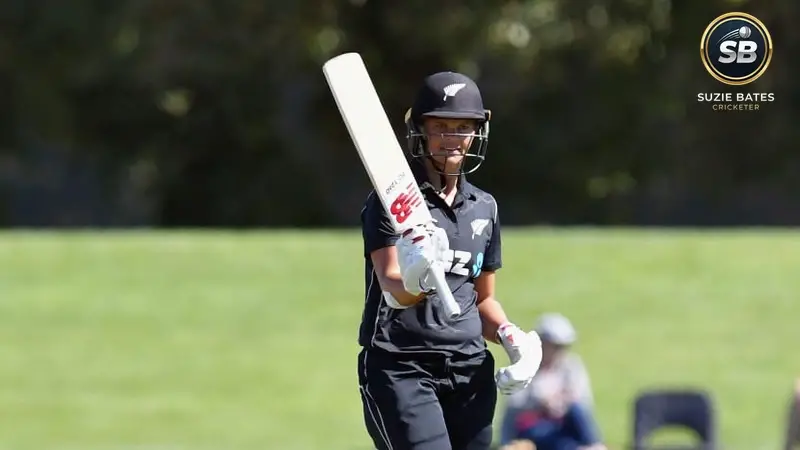Suzie Bates‘ debut in One-Day Internationals marked the arrival of a generational talent in New Zealand cricket.
Details of Suzie Bates’ ODI Debut
The commencement of any professional athlete’s career is a moment laden with expectation and promise, yet few transcend the immediate excitement to signal a shift in the landscape of their sport. For Suzie Bates, her foray into the world of One-Day International cricket was precisely this—a foundational moment that laid the groundwork for an illustrious career defined by all-round brilliance, inspiring captaincy, and remarkable longevity. It was a baptism by fire in the demanding arena of international competition, pitting the nascent all-rounder against one of the formidable forces of the women’s game. To truly appreciate the significance of this milestone, we must delve into the specific contours of the contest, examining the environment, the opposition, and the high stakes involved that served as the backdrop for Suzie Bates’ debut.
Opponent Team and Date
Suzie Bates made her One-Day International debut for New Zealand on March 4, 2006, against India. India, historically and at that time, represented a significant challenge, boasting a lineup of seasoned performers capable of exploiting any vulnerability. Debuting against a side of such caliber instantly elevates the perceived difficulty and the stakes for the newcomer. It forces a young player to confront world-class opposition immediately, providing an invaluable, unfiltered assessment of where they stand. This particular fixture, therefore, served as an acid test of Bates’ preparedness for the rigorous demands of international cricket.
This defining debut set in motion the early chapters of a journey traced throughout her Profile & Career timeline, highlighting how each milestone shaped her rise.

Venue and Match Conditions
The match unfolded at the Bert Sutcliffe Oval, Lincoln, New Zealand. Playing on home soil, albeit at a venue that might not possess the grand fanfare of major international arenas, offered a degree of comfort. Home conditions bring inherent familiarity with the pitches, the outfields, and the general atmosphere, factors that can subtly aid a debutant navigating the nervous energy of their first appearance. The pitch conditions at Bert Sutcliffe Oval often favored a balanced contest, typically assisting pace early on before settling down for stroke-play, demanding adaptability from all performers.
Final Result and Impact on Series
In a display of collective team effort, New Zealand emerged victorious in the match. A debut victory is always a sweet memory for any player, offering not just two points in the series standings but a powerful psychological lift. The winning feeling validates the team’s strategies and bolsters the confidence of the newest member. While the overarching narrative is often focused on individual performance, the victory itself underscores the collective achievement, integrating Bates immediately into a successful unit. This outcome served to intensify the series, ensuring both teams remained highly motivated for the subsequent clashes, and positioning New Zealand favorably.

Performance Analysis in the Debut Match
In Suzie Bates’ debut, her performance showcased early talent, hinting at her future status as a top player. Although statistics reveal key figures, exploring her effort and field impact adds depth to the understanding of her role. She demonstrated readiness for the challenges of international cricket.
Bates’ performance told the story of a young athlete mastering basics while possessing the composure needed for success on a global level. Her immediate influence was evident as she bowled with precision that exceeded expectations for a newcomer. This versatile contribution was vital during crucial moments of the match, illustrating her capability as a well-rounded cricketer from the start.
Bowling Metrics and Role
Where Bates truly shone in her maiden ODI was with the ball. As an all-rounder, the bowling effort is crucial, and she immediately delivered a mature performance that showcased both skill and composure. She took one wicket for 20 runs in her four overs. This spell was marked by exceptional economy for the time, demonstrating a tight line, effective control, and an ability to keep the scoring rate in check, all vital attributes for a successful limited-overs bowler. The wicket she claimed was a prize scalp, breaking a partnership or exposing the tail, each scenario carrying significant weight in the match’s ebb and flow.

Fielding and Overall Play
Beyond the black and white of the scorebook, a player’s all-round value is often assessed by their presence in the field. In cricket, a strong fielding effort can save numerous runs, take crucial catches, and sustain the intensity of the side. While specific fielding statistics from the debut are not detailed, the context of a winning performance suggests that the New Zealand side maintained a high standard of overall play. For an energetic and naturally athletic player like Bates, contributing to a tight fielding unit would have been a given. Her movements, ground coverage, and throws would have all been under intense scrutiny.
Key Moments and Highlights
The key highlight of Suzie Bates’ debut was undeniably the successful execution of her bowling role. Securing a wicket while maintaining an exceptional economy rate of 5.00 runs per over in an ODI debut is a noteworthy achievement and speaks volumes about her control and ability to adapt to the pressure. The solitary wicket was a tangible and high-value contribution to the team’s effort, offering immediate justification for her selection and proving her capacity to be a genuine threat with the ball on the international stage.
Suzie Bates made her One-Day International debut on March 4, 2006, against India, marking a successful start to her career. Playing at Bert Sutcliffe Oval in Lincoln, New Zealand won the match. Though she didn’t bat, her disciplined bowling earned a key wicket while conceding only 20 runs in four overs. This performance highlighted her skill and composure under pressure, foreshadowing her future as a respected all-rounder in women’s cricket.

